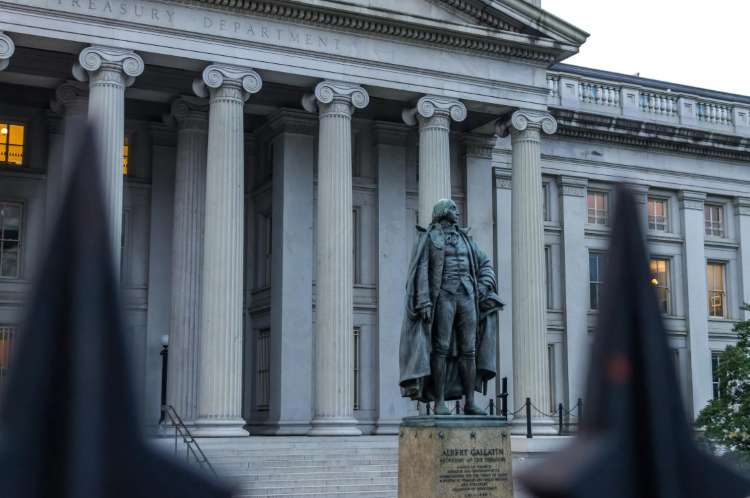The recent Moody’s downgrade of the United States’ sovereign credit rating—from Aaa to Aa1—may seem a trivial adjustment, but its implications resonate far beyond the numbers. This is not merely a technical adjustment; it is a sobering reflection of America’s fiscal fragility and a formal institutional response to more than a decade of strategic drift. What began with ballooning debt and the economic unilateralism of the Trump years continues today amid global realignments and domestic paralysis.
For decades, the United States was the lodestar of global financial confidence. That status is now under strain. A pattern of fiscal indiscipline, erratic policymaking, and a widening gap between economic fundamentals and political behaviour has eroded trust in Washington’s long-term stewardship.
READ | PLFS 2025: India looks to bridge the jobs reality gap
A fiscal model under siege
Moody’s downgrade rests squarely on the sustained deterioration of America’s fiscal outlook. Federal debt has crossed $36 trillion, while annual deficits hover near $2 trillion—amounting to over 6% of GDP. These figures are not anomalies; they signal a structural erosion of the US government’s ability to balance books or make strategic investments.
Even under optimistic projections, Moody’s expects these weaknesses to persist. More worrying is the apparent dysfunction of the political system. The collapse of the so-called “One, Big, Beautiful Bill”—a sweeping tax reform proposal—illustrates the extent of partisan gridlock. While the bill’s failure prevented the addition of $4 trillion to the structural deficit, it also exposed the absence of viable, bipartisan alternatives.
As debt mounts and deficits deepen, long-term interest rates are on the rise. The Federal Reserve, once the counterweight to fiscal laxity, is increasingly constrained. Inflation remains stubborn. Supply chains are unstable. Fed Chair Jerome Powell has warned of a looming era of persistent supply shocks—a challenge that may outpace conventional monetary tools. And in Washington, the political will for hard choices appears increasingly scarce.
Tariff nationalism returns with vengeance
Further complicating America’s economic trajectory is the return of tariff-centric policy. Treasury Secretary Scott Bessent’s recent endorsement of ‘Liberation Day’ tariffs—now broader and more punitive—has revived concerns about America’s tilt towards economic insularity.
What was once deployed as leverage in trade disputes has morphed into a structural burden. Tariffs are distorting markets, raising input costs, and forcing companies to reconfigure supply chains based not on efficiency, but on political expediency. The result: diminished competitiveness, rising consumer prices, and increased strategic vulnerability.
End of economic exceptionalism
The signs are unmistakable: the United States may be nearing the end of its current economic cycle. Sovereign downgrades in advanced economies often coincide with moments of structural reckoning—when political dysfunction collides with fiscal overreach and economic fatigue.
The traditional drivers of US dynamism—innovation, consumer demand, and open trade—are increasingly constrained by populism and short-termism. Monetary policy is boxed in. Fiscal policy is paralysed. Political incentives now favour performative outrage over substantive reform. Investments in long-term growth—be it infrastructure, education, or the green transition—have taken a back seat to deficit spending.
Without bold structural reform, the United States risks drifting into a state of managed stagnation—no longer in crisis, but no longer in command. For a nation that issues the world’s reserve currency and underwrites global financial stability, such drift is not just a domestic concern—it is a systemic risk.
A shifting global order
Moody’s decision comes amid a broader recalibration of global trade and power. The liberal economic order born after World War II is fraying. Strategic competition is reshaping trade flows, investment patterns, and alliance structures.
In today’s multipolar world, trade is no longer merely an economic transaction—it is a geopolitical act. Tariffs, subsidies, and bilateral pacts are now tools of statecraft. The United States, once the anchor of multilateralism, is increasingly seen as transactional and unreliable. This perception is prompting even close allies to hedge their bets.
European and Asian partners are diversifying their economic dependencies. While the US remains central, it is no longer singular. Its credibility must now compete in a more contested, less forgiving international environment.
Rebuilding American economic leadership will require more than fiscal correction. It will demand political maturity, institutional renewal, and a genuine recommitment to multilateralism. Leadership in a volatile world cannot be asserted by decree—it must be earned through consistency, foresight, and responsible governance.
The question facing Washington today is not whether it can afford to lead the world. It is whether it still remembers how.

